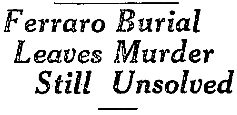February 6, 1927
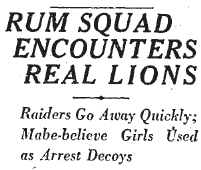
Over the weekend, the District Attorney’s crackerjack Prohibition task force proved beyond the shadow of a doubt their devotion to the cause.
Then again, after the theatrical busts they staged, it’s also possible that rum squad head George Contreras and his men simply craved adventure, danger, or an excuse to wear women’s clothing.
The fun started when Contreras and two of his agents entered a home while dressed as telephone repairmen. When they were unable to find the hooch inside, they flung open the chicken coop in the backyard, and were greeted by three full-grown lions.
Yes, three full-grown lions. In a chicken coop.
All three men promptly vaulted over the fence, and sought shelter across the street. Here, they discovered A. Hernandez’s 25 gallon still, and arrested him.
The lions were pets, they later discovered, though “not particularly fond of strangers.”
After the lion incident, Contreras dressed two more of his agents up in women’s clothing and took them joy-riding to
217 E. 61st St.. Here, he pulled up to the home of a suspected moonshiner, Raymond Manley, and asked for “some liquor for the girlfriends.” When Manley brought out a bottle, police raided the place and discovered an enormous still, 180 gallons of whiskey, and 39 barrels of mash.
So, to sum up: a man crafts a tasty beverage by hand, and goes to jail for his trouble, while the man who raises adult lions, in a chicken coop, no less, walks free. And our rum squad seems to enjoy playing dress-up a little more than the average adult probably should.
Up is down, left is right. Sheesh.
 Over the weekend, the District Attorney’s crackerjack Prohibition task force proved beyond the shadow of a doubt their devotion to the cause.
Over the weekend, the District Attorney’s crackerjack Prohibition task force proved beyond the shadow of a doubt their devotion to the cause. Over the weekend, the District Attorney’s crackerjack Prohibition task force proved beyond the shadow of a doubt their devotion to the cause.
Over the weekend, the District Attorney’s crackerjack Prohibition task force proved beyond the shadow of a doubt their devotion to the cause.

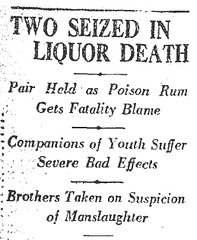




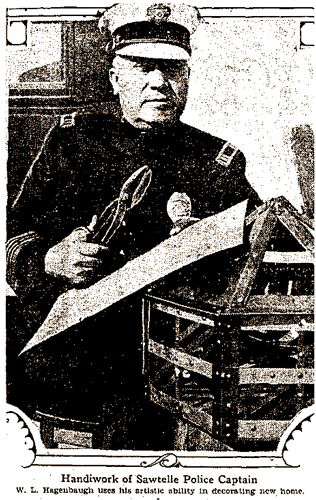 December 16, 1927
December 16, 1927

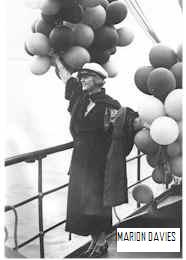


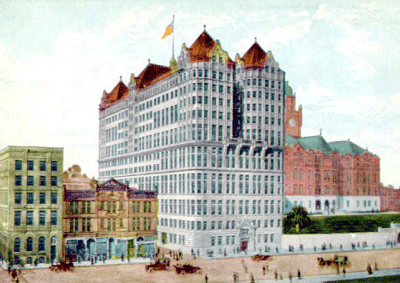
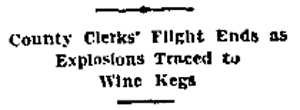
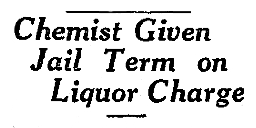
 June 16, 1927
June 16, 1927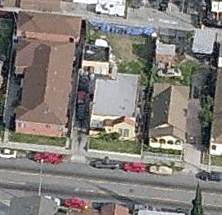 cases of assorted liquors, at his home bootlegging operation (complete with full bottling plant). Proprietor Fred had driven the coppers away with a gun but they’d come back with full force and broken down the door. And so before Municipal Judge Stafford went Fred, where today he was told he could pay $500 ($5,975 USD2005) or take fifty days. He took the fifty days. Ah, this, just a day like any other, here in Volstead-era Los Angeles.
cases of assorted liquors, at his home bootlegging operation (complete with full bottling plant). Proprietor Fred had driven the coppers away with a gun but they’d come back with full force and broken down the door. And so before Municipal Judge Stafford went Fred, where today he was told he could pay $500 ($5,975 USD2005) or take fifty days. He took the fifty days. Ah, this, just a day like any other, here in Volstead-era Los Angeles.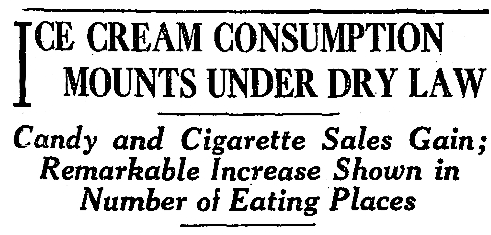
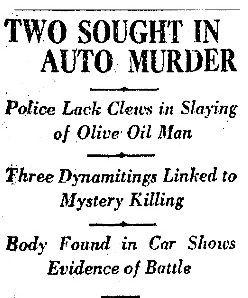
 On this Spring day in 1927, investigating officers were pavement-pounding in the Italian neighborhoods, attempting to scare up information about the April Fool’s Day discovery of one murdered Antonio (Tony) Ferraro. But there was no talking to be had, and the crime scene revealed nothing in the way of tell-tale fingerprints or any such evidence, and so Tony Ferraro remains another unsolved Los Angeles gangland slaying.
On this Spring day in 1927, investigating officers were pavement-pounding in the Italian neighborhoods, attempting to scare up information about the April Fool’s Day discovery of one murdered Antonio (Tony) Ferraro. But there was no talking to be had, and the crime scene revealed nothing in the way of tell-tale fingerprints or any such evidence, and so Tony Ferraro remains another unsolved Los Angeles gangland slaying.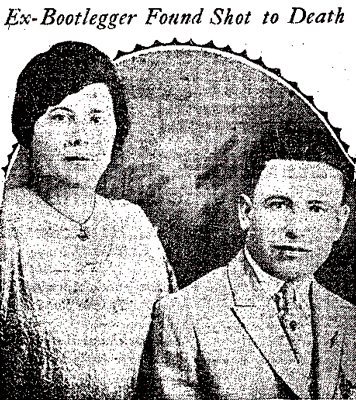 Robbery was not the motive, as Ferraro’s diamond ring, watch, money clip and olive oil were unmolested. Persons unknown entered Ferraro’s car, where he was beaten with a tire iron (his bruised hands indicating he put up a strong fight) and then shot in the head once with a .38 and twice with a .32. The body was then pulled from the front seat and lain across the olive oil in the back.
Robbery was not the motive, as Ferraro’s diamond ring, watch, money clip and olive oil were unmolested. Persons unknown entered Ferraro’s car, where he was beaten with a tire iron (his bruised hands indicating he put up a strong fight) and then shot in the head once with a .38 and twice with a .32. The body was then pulled from the front seat and lain across the olive oil in the back.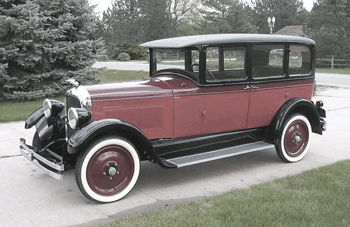 On April 5 the Times reported a rumor that Ferraro’s car had been seen the night of the 31st in
On April 5 the Times reported a rumor that Ferraro’s car had been seen the night of the 31st in 